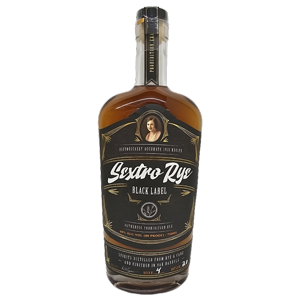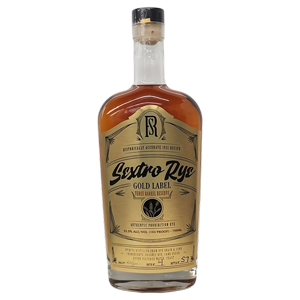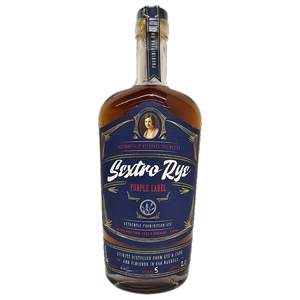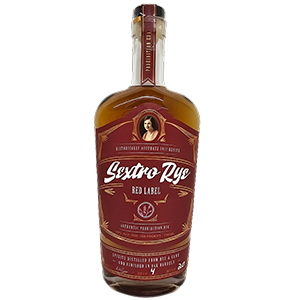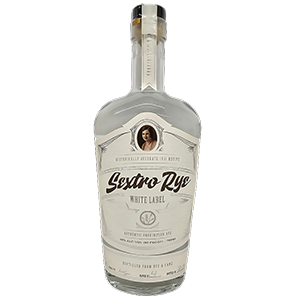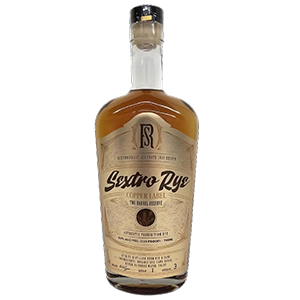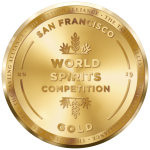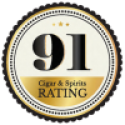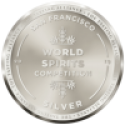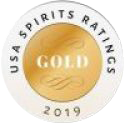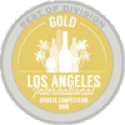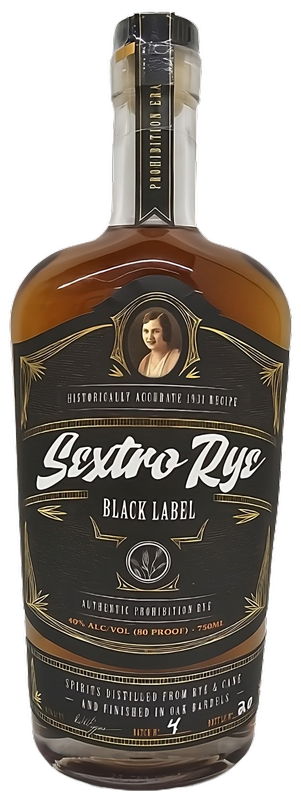BUY NOW
Our Spirits
$99.99
Gold Label Rye
CURRENT RYE AWARDS
PROOF AWARDS
- Blue Label Vodka–Gold
- Black Label–Gold
- Purple Label—Gold
- Red Label—Gold
USA SPIRITS
- White Label–Gold
- Black Label–Silver
- Blue label Vodka–Silver
SAN FRANCISCO WORLD SPIRITS
- Patriot—Silver
DENVER INTERNATIONAL SPIRITS COMPETITION
- Purple Label—Silver
THEFIFTYBEST.COM
- Black Label—Gold
- Red Label—Silver
CIGAR & SPIRITS MAGAZINE RATING
- Black Label–91
- White Label–93
DENVER INTERNATIONAL SPIRITS COMPETITION
- Black Label—Gold
- White Label–Gold
- Blue Label Vodka–Silver
LOS ANGELES INTERNATIONAL SPIRITS COMPETITION
- Black Label–Silver
- White Label–Gold & Best of Category
NORTH AMERICAN BOURBON & WHISKEY COMPETITION
- Black Label–Double Gold
SEATTLE INTERNATIONAL SPIRITS AWARDS
- Black Label–Gold
- White Label–Silver
FREQUENTLY ASKED QUESTIONS
The mashing process is pretty similar when making these spirits but it’s the secret ingredients or grains to sugar and yeast which set them all apart.
While whiskey, scotch, bourbon, rye whiskey, and rye are similar in nature the (TTB) Tax and Trade Bureau sets them apart with governing rules and that over the years have turned into laws so there is no confusion on the consumers part.
These rules are as follows:
- Whiskey – Spirits distilled from a fermented mash of grain at less than 95% alcohol by volume (190 proof) having the taste, aroma, and characteristics generally attributed to whisky and bottled at not less than 40% alcohol by volume (80 proof).
- Scotch – Un-blended whisky manufactured in Scotland in compliance with the laws of the United Kingdom.
- Bourbon – Whisky produced in the U.S.. at not exceeding 80% alcohol by volume (160 proof) from a fermented mash of not less than 51 percent corn and stored at not more than 62.5% alcohol by volume (125 proof) in charred
new oak containers (barrels). - Rye Whiskey – Whisky produced at not exceeding 80% alcohol by volume (160 proof) from a fermented mash of not less than 51 percent rye and stored at not more than 62.5% alcohol by volume (125 proof) in charred new oak containers (barrels).
- Rye or 100% Straight Rye – Rye whisky stored in charred
new oak containers for 2 years or more· “Straight Rye Whisky” may include mixtures of two or more straight rye whiskies provided all of the whiskies
are produced in the same state.
Sourced from the Tax and Trade Bureau
What’s the difference between bourbon, scotch, and rye. It’s essential to understand this difference so you can make better choices when mixing your favorite drinks. Not only do they have different characteristics, but they also have different levels of alcohol in them. And each of these characteristics can significantly affect the way that your drink will turn out.
It would help to keep a few things in mind when comparing rye whiskey and Scotch whiskey. First, rye is the base spirit distilled from rye grains. The rye whiskey has a higher percentage of rye whiskey essence than does the scotch. The rye comes purified a bit higher than the scotch to add a bit of rye to the whisker, which will make the rye more alcoholic than the scotch.
Rye whisky, also known as rye whiskey, is traditionally much lower in alcohol content than scotch. Furthermore, this is because the rye tastes much better fermented at a cooler temperature. Because of this, rye whiskey will usually have lower alcohol content. Often you will find that the lower alcohol content is a good thing if you don’t like a robust taste in your cocktails.
Another critical difference between rye whiskey and bourbon whiskey is the age of the rye. The rye is made significantly younger than the bourbon. Rye whiskey is often best mixed with younger whiskies such as Scottish whiskey. The older the whiskey, the fuller it will taste. For some people, this is an excellent thing because the flavors are more fully transparent.
The final difference between bourbon and rye whiskey is the rye flavor. Rye whiskey usually has a berry or citrus aroma, and rye tastes of plums or raisins. White Rye or Moonshine bottled after the distillation process. But it tastes excellent straight, neat, or with your favorite mixed drink. Rye can also be mixed with scotch and will then have a different flavor.
There are some notable exceptions to the rye whiskey to bourbon and scotch difference. In Scotland, rye whiskey is also sometimes referred to as whiskey stones. However, the rye grain also holds water, added to other drinks such as orange juice. You can even buy a small clear glass of white “moonshine” rye whiskey for your favorite cocktail as a replacement for vodka that tastes even better.
One last difference between rye whiskey and scotch is that rye tends to be slightly sweeter than scotch. So if you drink rye when you are out on the town sweetening it up with a Manhattan, you’ll find rye to be less dry than scotch. Furthermore, This is also why rye whiskey comes mixed with brandy, such as rye whiskey and amaretto.
Hopefully, this little FAQ will help shed some light on the rye whiskey to Scotch difference. Rye whiskey is generally less dry, and therefore less smooth tasting than scotch. It is a sweet liqueur and can be an ideal mixer with other spirits. As with most things, though, you will get what you pay for, so go easy on the rye.
Bourbon whiskey is one of the most popular types of whiskey. It consists of Kentucky traditional whiskey aged in new charred oak barrels. There are many different brands and ages of whiskey produced from this variety. The rye in these is usually moister than the rye in scotch and, therefore, more flavor.
If you are looking for a sound cocktail, you might want to consider investing in rye rather than a rye whiskey or scotch blend. They are similar in taste, but rye usually has a little more kick and a flavor palette. I love rye, over rye whiskey, and scotch.
However, I’m not always comfortable mixing them. The rye makes the mix taste too clean and not quite the same as when mixed with scotch.
When it comes down to rye and scotch, there isn’t a big difference between the two. Both are excellent decisions when it comes to stocking up on liquor. Just be sure to do some research and find out what brands mix well together. Hopefully, I have answered your question, “What is the difference between rye, rye whiskey, bourbon, or scotch?
Rye is manufactured by fermenting the “rye grain” with sugar, purified mineral water, and yeast to produce a mash bill. Once set for a certain period, it is then distilled in a column still or pot still. They placed inside charred American oak barrels for an aging process of no less than two to four years.
Rye whisk the prevalent whiskey in the northeastern United States, especially in Pennsylvania and Maryland. Pittsburgh, Pennsylvania, was remained the center of rye whiskey production through the late 1700s and early 1800s.
By 1808, in Allegheny County, Pennsylvania, farmers sold rye at one half barrel for each man, woman, and child in the country.
By the 1880s, Joseph F. Sinnott’s distillery, Moore and Sinnott, located in Monongahela, Pennsylvania, was the largest producer of rye whiskey, with production capacity of 30,000 barrels a year.
Rye whiskey largely disappeared after Prohibition.
Without rye, you cannot make a decent Old Fashioned, Sazerac, or Manhattan.
View our 81 different rye cocktails
This alcohol can also be served straight, neat, on the rocks, or mixed with club soda or ginger ale ginger beer. Or any liqueur you can think to imagine. Being as unaged rye or moonshine tastes better than vodka and most rums for your mixed cocktail favorite. If you had not tried what people have been raving about now for centuries, then you should grab a bottle and see the difference today.
Learn more by visiting our complete article on this subject by going here.
- Helps you lose weight
Rye is widely regarded as the most effective grain for weight loss. Rye contains a form of fiber that makes you feel full faster than other grains. This solves one of the most common problems with diets: hunger. By reducing your hunger, you’ll feel less compelled to eat more food, which means you’ll consume fewer calories and lose more weight. Plus, whiskey is a low-calorie alcoholic beverage, so you can drink it even if you’re on a diet. - Helps Digestion
The fibers described above not only help with weight loss but also help with digestion. The fiber dislodges blockages and relieves gas and discomfort associated with digestive problems. Allowing you to focus on the tasks at hand. - Approved by Diabetics
Because rye and whiskey do not include carbohydrates, they will not affect your blood sugar levels in the same way that wheat products can. As a result, whiskey is the most popular alcoholic beverage among diabetics. Regardless, you should consult your doctor before drinking. - Cancer Risks are Reduced
Whiskey includes ellagic acid, an antioxidant found in rye grains. This acid stops DNA from coming into contact with cancerous cells. The continuing research on the grain, which is revealing more and more good linkages to cancer prevention, has been highly encouraging to rye grain suppliers. - Healthy Heart
Including rye in your diet on a daily basis can benefit those with high blood pressure. The combination of fiber, vitamins, and minerals all help to decrease blood pressure. As a result, the risk of heart attack, stroke, and blood clots is lowered.
Iowa Legendary Rye is made using a pre-prohibition grandmother’s bootlegging recipe from Templeton, Iowa. That is teamed with a prohibition-era style small pot still to give you the very best in authentic time period taste and full-flavored rye.
Our Rye recipe has won multiple awards in gold and best in class around the United States. Have not had an opportunity to grab a bottle yet give our red and unaged a try. The red makes for an excellent smooth sipper straight or on the rocks and our unaged rye is an excellent replacement for any vodka or rum cocktails you already have and are already your favorites.
By evaporating the ethanol from a fermented alcoholic base liquid, distillation produces a spirit with a high ABV (sometimes called a wash). Because ethanol boils at a lower temperature than water, it can be extracted as vapor while water remains liquid. The process will never produce pure ethanol, and the distillate will always contain some water and flavor- and aroma-enhancing compounds called congener.
During pot distillation, the wash heats in the main chamber to the point where boiling ethanol vapor rises to the still’s head and exits through the line arm. The steam then enters the cooling coil, condenses, and flows into a collection vessel as a liquid.
Historically, distillers heated the pot directly with heat sources such as fire, but temperature-controlled steam is now a common alternative. The modern technique is advantageous because it eliminates the risk of burning the wash, which results in undesirable flavors. Nonetheless, some pot distillers continue to heat their vessels directly.
Column distillation is similar to a series of pot distillations occurring one on top of the other.
The heat source (steam) is contained within the still, running from the base through its numerous chambers and up to the still’s top. The wash enters near the top of the column and sinks in a liquid state through the chambers. The ethanol rises back through the chambers as it heats and evaporates, condensing and re-evaporating at each stage.
Each chamber purifies the ethanol by removing impurities such as water and congener until it reaches the top of the still in a highly pure state. The ethanol vapor then exits the system via a cooling condenser and into a collection vessel.
ADVANTAGES AND INCONVENIENCES
Continuous distillation enables column stills to produce significantly more than pot stills, which require cleaning after each batch. Column stills also have a purer, cleaner distillate than pot stills, though pot stills yield a more flavorful spirit with a higher concentration of congener.
The ABV of spirits distilled in pots ranges between 60 and 80 percent (after multiple distillations), whereas spirits distilled in columns can reach 96 percent.
CHOICES BASED ON INSPIRATION
Pot stills are the preferred method for producing spirits such as single malt Scotch, Cognac, mezcal, Rhum, and Rye, because they create a more flavorful spirit. Column stills, on the other hand, are preferred for distilling neutral spirits such as gin and vodka and are also frequently used in the production of whiskey, bourbon, brandy, and white rum.

